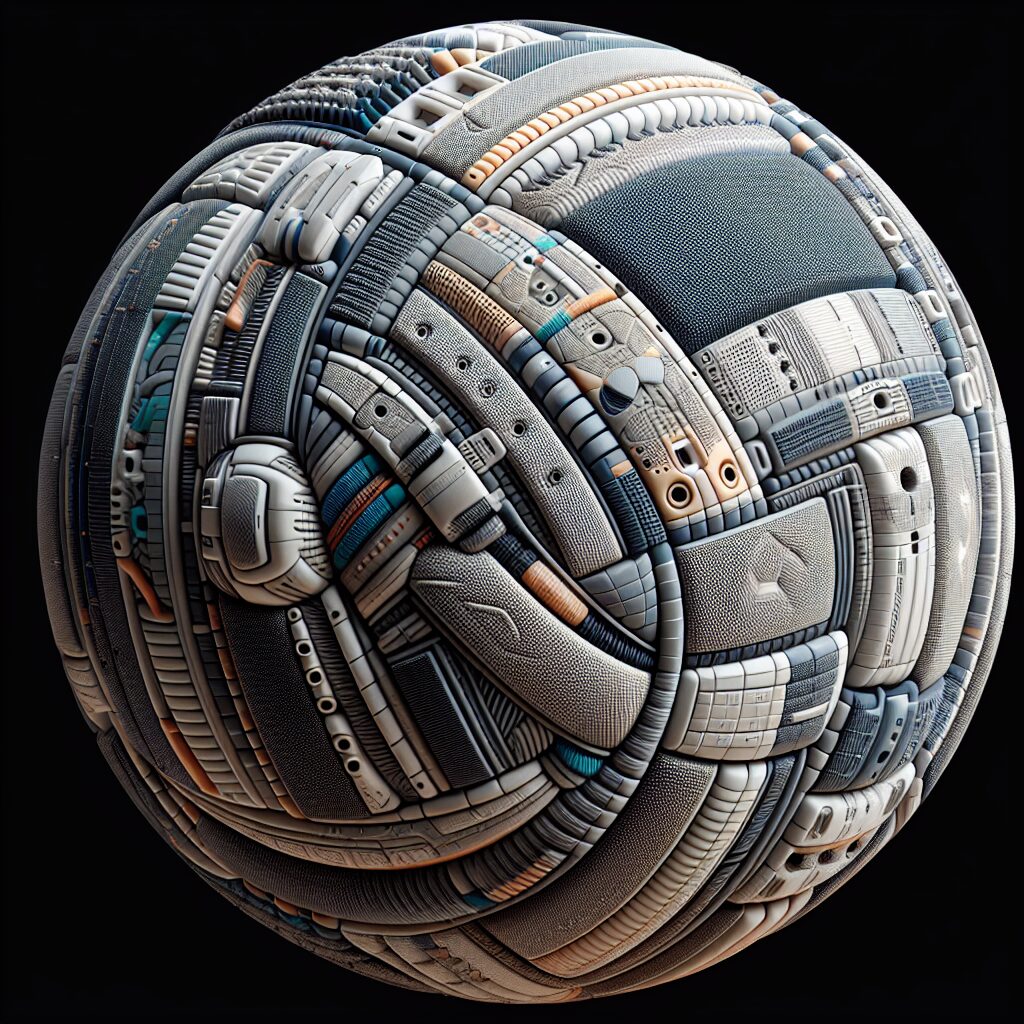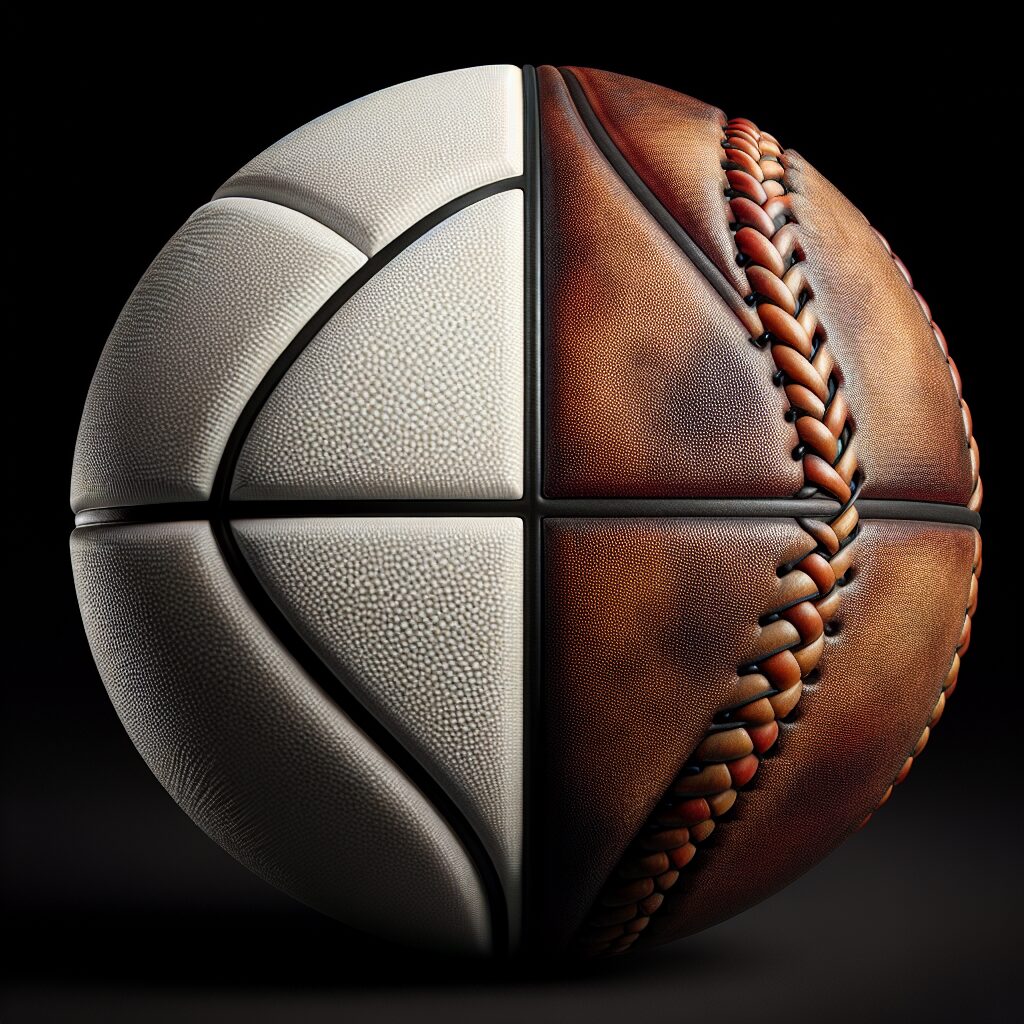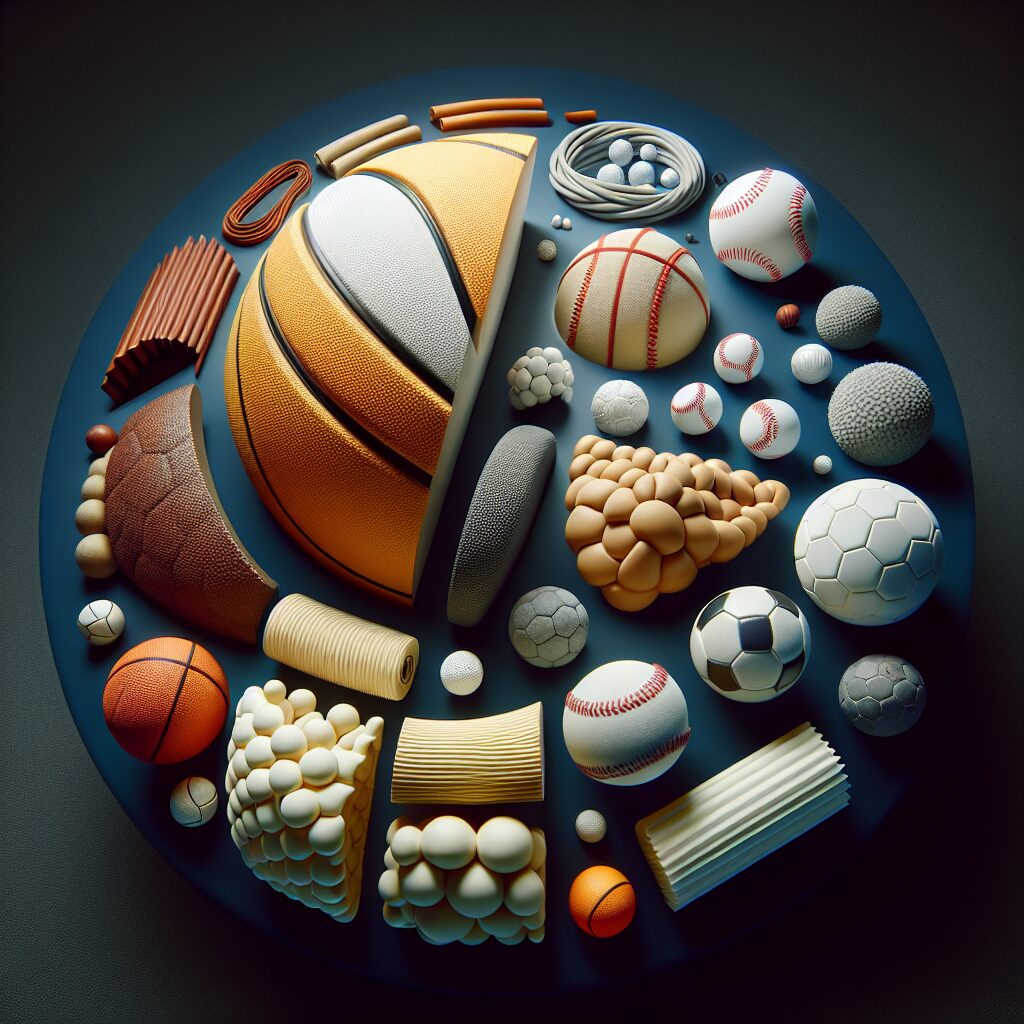Unveiling the Outer Materials of Volleyballs
When it comes to sports, the choice of equipment plays a crucial role in enhancing performance and ensuring a thrilling experience. Among the many sporting gear available, volleyballs hold a special place in the hearts of both players and spectators. These balls are not just mere round objects; they are carefully crafted using specific materials that impact the game in unique ways. For instance, did you know that the outer materials of volleyballs can significantly affect their durability and grip? With this in mind, let us delve into the fascinating world of volleyball construction and explore the key factors that differentiate one ball from another.
First and foremost, the outer cover of a volleyball is made from a variety of materials, each with its own distinct characteristics. Common choices include synthetic leather, composite, and PVC. Synthetic leather is favored for its softness, durability, and excellent grip. On the other hand, composite materials are known for their enhanced control and responsiveness, making them a popular choice among professional players. PVC, or polyvinyl chloride, is often used in recreational volleyballs due to its affordability and resistance to wear and tear. Understanding the differences between these materials is essential for players looking to optimize their performance on the court.
Moving forward, let us now explore the key takeaways of this article. We will dive deeper into the specific impacts of different outer materials on a volleyball’s durability and grip. Additionally, we will discuss the unique features that distinguish synthetic leather, composite, and PVC-covered volleyballs from each other. By the end of this article, you will have a comprehensive understanding of how the outer materials of volleyballs can influence your game. So, let’s proceed further and uncover the secrets held by these seemingly simple round objects. Stay tuned for an enlightening journey into the world of volleyball construction!
Key Takeaways
1. The outer cover of a volleyball is typically made of synthetic leather, which offers durability, water resistance, and good grip for players. However, some high-end volleyballs may use genuine leather for a superior feel and performance.
2. Volleyballs with a single-layered synthetic leather cover tend to be more lightweight and provide a softer touch, making them ideal for beginners and indoor play. On the other hand, double-layered covers are more suitable for outdoor use due to their increased durability and resistance to abrasion.
3. The panels on the surface of a volleyball play a crucial role in its performance. Generally, volleyballs feature 18 panels arranged in a specific pattern, which affects their flight characteristics and stability. A unique panel design may enhance the playability and visibility of the ball.
4. The bladder inside the volleyball is responsible for its shape and bounce. Most volleyballs use a butyl bladder, which retains air better and provides a consistent bounce, ensuring better control during the game and reducing the need for frequent inflation.
5. The construction method of a volleyball, such as hand-stitched or machine-stitched, influences its overall quality and longevity. While hand-stitched volleyballs provide better control and responsiveness, machine-stitched ones offer improved durability and lower costs, making them more suitable for recreational play.
What are the Outer Materials of Volleyballs Made of? A Detailed Look
Covering Material Composition
The outer materials of volleyballs play a crucial role in determining the ball’s performance, durability, and grip. These materials are carefully selected to meet specific requirements for professional play, ensuring consistency and accuracy during matches.
Most commonly, volleyballs consist of synthetic leather or composite leather as the primary covering material. These materials offer a combination of durability, softness, and enhanced grip, contributing to better control and accuracy. Synthetic leather is often preferred due to its cost-effectiveness and ability to withstand frequent use and rough playing conditions.
However, composite leather, which combines synthetic materials with genuine leather, provides an even softer and more premium feel, enhancing the overall playing experience.
The Impact of Panel Construction
Volleyballs are typically constructed with various panels sewn together. The panel construction affects the overall shape, flight, and stability of the ball during play.
Traditionally, volleyballs were stitched with 18 panels, but modern designs now utilize fewer panels, often 8 or 12. Reduced panel count helps in creating a more consistent and predictable flight path, making the ball easier to control and predict its trajectory.
Moreover, the panel construction also affects the aerodynamics of the ball, reducing air resistance and providing players with a smoother playing experience.
The Role of Inner Bladder
Beneath the outer surface of a volleyball, there is an inner bladder responsible for maintaining the ball’s shape and air pressure. This bladder is typically made of either latex or butyl rubber.
Latex bladders are known for their superior rebound characteristics, providing a lively and responsive feel. On the other hand, butyl rubber bladders offer excellent air retention properties, minimizing the need for frequent inflation.
Top-quality volleyballs often utilize a combination of both materials, taking advantage of the best qualities of each to ensure optimal performance.
Considerations for Indoor and Outdoor Play
When it comes to choosing a volleyball, the playing environment is an important factor to consider. Different outer materials and construction techniques are recommended for indoor and outdoor play to suit varied playing conditions.
For indoor play, volleyballs with a synthetic or composite leather cover are ideal. These materials are designed to provide optimal grip on indoor surfaces, allowing players to maintain control even during intense rallies.
On the other hand, outdoor volleyballs are exposed to more abrasive surfaces and harsh weather conditions. As a result, they are often made with more durable and weather-resistant materials such as rubber or synthetic leather. These materials ensure the ball can withstand the rigors of outdoor play without compromising its performance.
Tips for Selecting the Right Volleyball:
- Consider the playing environment.
- Choose a ball with the appropriate outer material for indoor or outdoor play.
- Look for a design with fewer panels for improved flight stability.
- Determine the desired level of grip and feel.
- Check the quality of the inner bladder for optimal shape and air retention.
Frequently Asked Questions
1. What are the most common materials used for the outer cover of volleyballs?
The most common materials used for the outer cover of volleyballs are synthetic leather, composite leather, and genuine leather. Synthetic leather is often preferred for indoor volleyballs due to its durability and resistance to dirt and moisture. Composite leather is a combination of synthetic and genuine leather and provides a good balance between durability and softness. Genuine leather, while less common, is favored for outdoor volleyball balls as it offers a superior feel and grip.
2. How are volleyball balls with synthetic leather different from those with genuine leather?
Volleyball balls with synthetic leather are typically more affordable and durable compared to those with genuine leather. They also require less maintenance as they can be easily cleaned and are resistant to moisture. On the other hand, genuine leather volleyball balls offer a superior feel and grip but require more care and maintenance to prevent cracking and water damage.
3. Are volleyball balls with composite leather suitable for professional games?
Yes, volleyball balls with composite leather are suitable for professional games. They provide a good balance between durability and softness, making them ideal for intense play. Many professional leagues and tournaments use volleyball balls with composite leather, as they offer high performance and durability.
4. How do the outer materials affect the performance of a volleyball?
The outer materials of a volleyball can have an impact on its performance. Synthetic leather balls are known for their durability and consistent flight characteristics. Genuine leather balls offer a better grip and feel, allowing players to have more control over the ball. Composite leather balls aim to provide a balance between durability, softness, and grip, offering a versatile option for players.
5. Can outdoor volleyballs be used indoors and vice versa?
While it is not recommended, outdoor volleyballs can be used indoors and vice versa. However, there are certain differences to consider. Outdoor volleyball balls usually have a thicker, more durable outer cover to withstand rough surfaces. Indoor volleyball balls, on the other hand, have a lighter and softer construction to enhance playability on smooth indoor surfaces.
6. How should I clean and maintain my volleyball with synthetic leather?
To clean and maintain a volleyball with synthetic leather, simply wipe it with a damp cloth after each use to remove dirt and sweat. Avoid using harsh chemicals or immersing the ball in water. To prevent cracking, store it in a cool, dry place away from direct sunlight.
7. Can volleyball balls with genuine leather be used in wet conditions?
Volleyballs with genuine leather should be used with caution in wet conditions. While genuine leather offers excellent grip and feel, it is more prone to damage from water. When exposed to moisture for extended periods, it may lose its shape, become slippery, or even crack. It is best to use synthetic or composite leather volleyballs in wet conditions.
8. Do certain outer materials offer better control when setting or spiking?
The outer materials of volleyballs can affect control, especially when setting or spiking. Volleyballs with genuine leather provide a better grip, allowing for greater control during these actions. However, some players prefer the consistency and durability of synthetic or composite leather balls for setting and spiking.
9. Can volleyballs with synthetic leather be used on grass or sand courts?
Yes, volleyballs with synthetic leather can be used on grass or sand courts. Synthetic leather offers good durability and can withstand the rougher surfaces of outdoor courts. However, it is crucial to maintain the ball properly and avoid excessive exposure to moisture.
10. Are there any regulations on the outer materials of volleyballs for official matches?
Yes, there are regulations on the outer materials of volleyballs for official matches. The International Volleyball Federation (FIVB) and other governing bodies provide guidelines on the approved materials and specifications for volleyballs used in professional and official tournaments. It ensures a consistent and fair playing field for all teams.
Final Thoughts
Unveiling the outer materials of volleyballs is essential for any player or enthusiast who wants to understand the impact of different materials on performance and suitability for different conditions. Whether you play volleyball casually or professionally, choosing the right outer material for a volleyball can significantly enhance your playing experience. Each material, be it synthetic leather, composite leather, or genuine leather, has its unique characteristics, offering players a variety of options based on their preferences and playing environment.
Considering factors such as durability, grip, feel, and maintenance requirements, players can make informed decisions about the outer materials of volleyballs. It’s important to note that while the outer material is significant, other factors such as ball size, inflation, and weight also contribute to a volleyball’s overall performance. By understanding the properties and advantages of different outer materials, players can optimize their game and enjoy the sport to the fullest.




